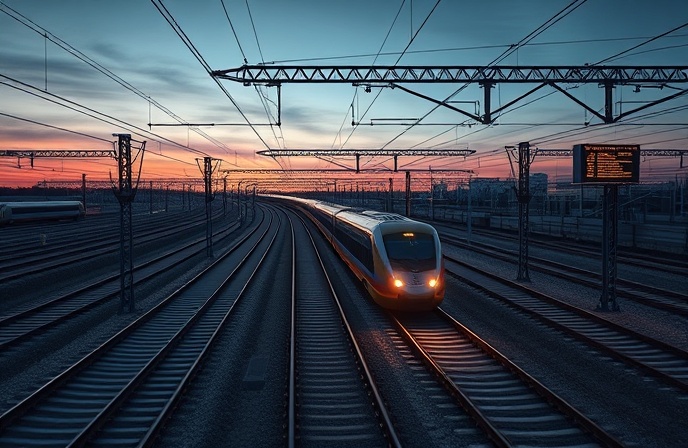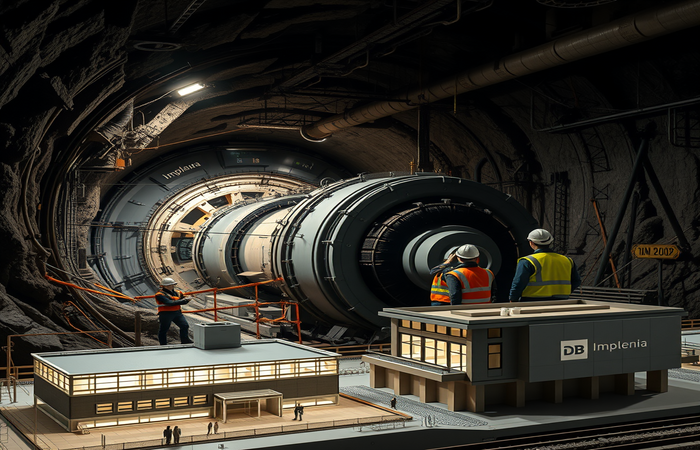Portal Bridge Replacement: NEC Rail Overhaul

This article explores the significant undertaking of replacing the Portal Bridge, a critical piece of infrastructure on the Northeast Corridor (NEC) rail line. The project, officially awarded to Skanska/Traylor Bros Joint Venture (JV), represents a substantial investment aimed at improving rail capacity and reliability between New Jersey and New York City. The replacement of the existing swing bridge with a modern, high-capacity structure is not merely a matter of infrastructure maintenance; it addresses long-standing challenges related to operational efficiency, marine traffic interference, and the overall resilience of this critical transportation artery. The project’s scale, exceeding $1.5 billion, highlights its importance within the broader Gateway Program, a larger initiative to modernize and expand rail capacity in this heavily trafficked region. This necessitates a deep dive into the engineering challenges, the financial complexities, and the potential long-term impact on the regional economy and commuter experience. We will examine the scope of the project, the technology involved, the funding mechanisms, and its implications for the future of rail transportation in the Northeast Corridor.
The Urgent Need for Bridge Replacement
The existing Portal Bridge, a century-old swing bridge, has become a significant bottleneck on the NEC. Its age and design lead to frequent openings for marine traffic, causing substantial delays and disruptions to the heavily utilized rail service. This impacts thousands of daily commuters traveling between New Jersey and New York City. The antiquated mechanism frequently suffers from mechanical failures, further exacerbating delays and adding to the overall unreliability of the rail system. The replacement is therefore not just a matter of modernization but a critical step in improving the dependability and efficiency of the NEC, a vital component of the regional transportation network.
Engineering and Construction Challenges
The construction of the new Portal North Bridge presents considerable engineering challenges. The project requires the construction of deep foundations, concrete piers, and substantial structural steel spans. The sheer scale of the undertaking, involving the demolition of the existing bridge and the construction of a new one over a busy waterway, demands meticulous planning and execution. The project incorporates advanced construction techniques to minimize disruption to rail and marine traffic during construction, a testament to the careful consideration of the project’s impact on the surrounding environment and the regional transportation network. This requires precise coordination between engineering teams, construction crews, and transportation authorities to ensure safety and maintain the flow of both rail and waterway transportation.
Funding and Partnerships
The $1.56 billion price tag demonstrates the substantial investment required for such a large-scale infrastructure project. The funding for the Portal North Bridge involves a multifaceted approach, with contributions from the US Department of Transportation, NJ Transit (New Jersey Transit), and Amtrak. This collaborative funding model showcases the importance of public-private partnerships in financing essential infrastructure improvements. The successful securing of significant federal funding underscores the project’s national significance in maintaining a robust and reliable national rail network. This collaborative financial structure is essential in facilitating the project and highlighting the national significance of the project.
Impact and Future Implications
The successful completion of the Portal North Bridge project will have profound implications for the Northeast Corridor. It will significantly increase rail capacity, reducing delays and improving the reliability of the rail service. This will directly benefit millions of commuters who rely on this crucial transportation link. Beyond the immediate improvements to commuter experience, the project also holds long-term economic benefits for the region. Enhanced rail service fosters economic growth by facilitating efficient movement of people and goods, supporting businesses and contributing to the overall vitality of the region. The project serves as a model for future infrastructure development initiatives, highlighting the importance of long-term planning, strategic partnerships, and innovative engineering solutions.
Conclusion
The construction of the Portal North Bridge represents a pivotal moment in the modernization of the Northeast Corridor (NEC) rail line. The $1.56 billion project, a collaborative effort between NJ Transit, Amtrak, and the US Department of Transportation, addresses the critical need to replace the aging and inefficient Portal Bridge with a modern, high-capacity structure. The project’s scope encompasses significant engineering challenges, requiring expertise in deep foundation construction, structural steel fabrication, and the complex logistics of working in a busy waterway. The funding mechanism, reflecting a blend of federal, state, and private investment, showcases the collaborative nature of large-scale infrastructure projects. Beyond the immediate benefits of improved rail service and reduced delays for millions of commuters, the project contributes to the long-term economic vitality of the region. The successful completion of the Portal North Bridge serves as a model for future infrastructure upgrades and reinforces the importance of sustained investment in modernizing and expanding rail capacity to meet the demands of a growing population and a robust economy. The project demonstrates a commitment to improving not only rail transportation but also the overall economic health and regional connectivity of the Northeast Corridor, setting a precedent for similar projects across the country.




